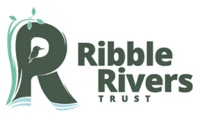
Planning on making a splash? What You Need to Know About Designated Bathing Waters
When the sun’s shining and temperatures soar, there’s nothing more refreshing than a dip in your local river or a paddle at the seaside. But before you head to the water’s edge, it’s worth asking an important question: is it safe to swim here?
In the Ribble catchment, several sites have been officially designated as bathing waters. These include well-loved coastal destinations along the Fylde coast, as well as inland locations like Edisford Bridge in Clitheroe.
What Exactly Is a Designated Bathing Water?

Designated bathing waters are areas that attract large numbers of bathers during the summer season and are recognised by the government as a popular spot for swimming or paddling. So, these sites are regularly monitored by the Environment Agency who look at various aspects of water quality, with a particular focus on harmful bacteria like E. coli and Enterococci.
Each year, the Environment Agency rates bathing waters as Excellent, Good, Sufficient, or Poor based on bacteria levels. This helps protect public health and raises awareness of pollution risks in our rivers, lakes, and seas.
Are Our Bathing Waters Safe to Swim In?
Unfortunately, many of the designated bathing waters in and around our catchment are currently falling short of the required standards- especially after heavy rain. Heavy rainfall can overwhelm sewage infrastructure, causing leaks known as discharges. Some of these are permitted, but many are due to outdated systems. Other sources of pollution include animal and livestock faeces, microplastics and heavy metals from road runoff, and chemicals from urban areas. Together, these pollutants are washed into our rivers and streams, raising bacteria levels and making the water unsafe for swimming.
Take Edisford Bridge as an example. On dry days, water quality often remains within safe limits. But after a downpour, pollution is quickly washed into the river, causing a rapid spike in harmful bacteria. This makes water quality unpredictable and can pose a real risk to public health.
That’s why checking water quality before taking a dip is so important. The Environment Agency provides up-to-date information online, allowing you to make informed choices about when and where to swim.
What Are We Doing to improve water quality
While Ribble Rivers Trust doesn’t have the power to regulate pollution or enforce environmental laws, we play a vital role in improving water quality and protecting our rivers in many different ways.
A key part of our work is monitoring water quality. Together with citizen scientists and community volunteers, we gather data on river health; tracking water quality and how it changes over time. This monitoring helps us identify pollution sources by combining the data with GIS mapping and land use information, allowing us to pinpoint where pollution is entering rivers and highlight priority areas for action.
But we go further than just providing the data- we work with communities to support local solutions. From collaborating with farmers on pollution reduction measures to delivering nature-based projects like wetland creation, tree planting, and river restoration, our work helps both people and wildlife. Regulators are part of this journey too, and we support organisations like the Environment Agency to take targeted action and invest in cleaner, healthier waterways.

Staying Safe in and Around Water
Even when water quality looks good, rivers can still pose serious risks. Fast currents, hidden obstacles, and cold temperatures can all catch people off guard. If you’re planning a paddle, swim, or splash about, follow these tips to stay safe:
- Check the weather forecast and water quality before swimming
- Avoid swimming after heavy rain
- Never swim near weirs, sewage outfalls, or industrial structures
- Always swim with a buddy and tell someone where you’re going
- Avoid swallowing water and shower as soon as possible afterwards
What Can You Do to Help?
Whether you’re a seasoned swimmer, a weekend paddler, or just love spending time by the river, there are plenty of ways to help:

- Stay informed: Use the Swimfo website to get information on bathing waters and water quality before visiting.
- Volunteer: Join our team of volunteers and citizen scientists who are working hard to monitor river health.
- Make better choices: Never flush wipes, sanitary products, or anything other than pee, poo, and paper.
- Pick up litter: A quick two-minute litter pick can stop plastic pollution at the source.
- Support our work: Help fund vital conservation efforts by becoming a supporter of Ribble Rivers Trust.
- Report river pollution: You can now report pollution incidents online as well as by phone on 0800 80 70 60.
Clean, healthy rivers aren’t just better for wildlife, they’re better for us, too. With your help, we can make the Ribble catchment safer for swimmers, better for wildlife, and more resilient for future generations.

Rivers are at the heart of our local landscapes. Whether you’re casting a line, exploring a riverside trail, or simply basking in the beauty of nature, you can help protect these special places now, and for generations to come.
By becoming a Ribble Rivers Trust supporter for just £3 a month, you’ll be funding real, on-the-ground action.
Ready to make a difference? Learn more here: ribbletrust.org.uk/become-a-supporter

